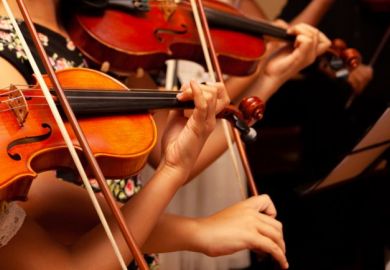With Henry Purcell, music in England reached a pinnacle of achievement; as Roger North pointed out in the 18th century, "A greater musical genius England never had". The tercentenary of the death of Henry Purcell in November 1995 is being marked in many ways, not least with the complete works being broadcast on Radio 3. It is hardly surprising that new studies of Purcell should be appearing, but it is startling that these may still include new material, both biographical and musicological, as is the case with the three books under review. Each work demonstrates that evidence about Purcell's life and sources is sketchy, yet the excitement of new discovery colours both Peter Holman's exploration of the background to Purcell's music, and the historical canvas of Maureen Duffy's and Robert King's studies.
At the heart of any musical monograph and biography is the music itself, and in this respect both Holman and King excel, though in different ways. Holman, who is both a scholar and early music performer, provides a comprehensive survey of each genre - vocal, choral, instrumental and theatre music - bringing to light many details of performance practice. His main aim, and one which is much needed, is to affirm sources and trace specific influences on Purcell's style.
Among his most significant conclusions is that English composers played a role in the formation of Purcell's style more important than that of the French and Italian composers conventionally cited. For instance, despite Italianate decorative elements in the songs and church music, Holman specifies not only the well-known Blow and Locke as influences, but many more obscure composers like Robert Ramsey and William Turner (whose works Purcell knew). In Holman's discussion of instrumental music, the history of the consort and the 24 violins supports his challenging thesis that the string fantasias were intended as counterpoint exercises (rather than for public performance) for viols rather than the new violins. And these masterpieces of the genre drew as much on the formal devices of Purcell's English precursors as on Italian polyphonic styles. Holman does not deny the importance of Italian instrumental styles for Purcell's odes and later anthems composed after 1687, nor the French influence in Dido and Aeneas, but he stresses English composers as formal models, and pinpoints in Dido Purcell's own innovation, the structural use of ground bass within the large-scale tonal structure. Throughout, Holman's comparison of Purcell's more complex formal types with their simpler, earlier origins, richly laced with analytic detail and useful musical examples, reinforces the perception of Purcell as a stylistic innovator, and offers valuable critical insight into the music itself.
If the eventual goal of Holman's enquiry is a positivistic overview of Purcell's style and sources, King wants above all to inspire the listener with a thirst and enthusiasm for the music. His accessible historical narrative is enriched with vivid descriptions of the choral and solo vocal works from the perspective of the performer. King's expertise as a conductor - the discography justifiably includes his own impressive list of recordings - infuses his "programme note" descriptions with pertinent insights into word-setting and texture, which underline the uniqueness of each anthem and ode, and many of the solo songs. Given the scope of his book, King necessarily omits detailed consideration of the instrumental or stage works, and similarly skims over issues of stylistic influence, which gives a slightly unbalanced effect.
But one of the strong points of his study, which complements Holman's more detailed analysis, is King's clear presentation of the stylistic shifts in Purcell's oeuvre. He highlights the change from polyphonic to solo devotional songs after 1672, the introduction of string ritornelli (imported from the Italian cantata tradition) in the anthems from 1682, the focus on devotional songs in the reign of the Catholic king James II during which only nine anthems were composed, and the composing of operas and semi-operas in the final years.
King's historical narrative is eminently readable, as for instance the lucid chapter on the state of the Chapel Royal during Purcell's infancy and his position as a chorister there under Henry Cooke and later Pelham Humphreys from the age of eight until his voice broke (early for the period) at 14. Using colourful primary sources he paints a bold backdrop to Purcell's commissions consisting of political and diplomatic intrigue - Charles II's triumphant Triple Alliance, the Glorious Revolution and James II's deposition, and Queen Mary's popularity.
The main strength of Maureen Duffy's new biography is also its main weakness. In the pursuit of historical reality, involving much guesswork, the extent of Purcell's oeuvre and stature is taken for granted and overlooked. As a novelist and playwright, whose extensive research on 17th-century London informed her novel The Passionate Shepherdess (1977), Duffy's researches into primary sources (which are given in her full and fascinating bibliography of 17th- and 18th-century works) is admirable, but her speculation, though richly novelistic, leaves open many questions. At its best it offers a framework for colourful characterisation of the dramatis personae of Purcell's milieu, who are only briefly mentioned by King. At its worst it is gossipy to the point of tedium. Much detail is brought to the lives of the multifacetted Purcell family- Henry senior, the composer's uncle, and his brother Daniel - of Matthew Locke, John Gostling, the bass who inspired so much of Purcell's best solo music, Nahum Tate, the Irish librettist of Dido, and especially Purcell's wife Frances. Vignettes of boy choristers travelling from afar to Westminster, court musicians taking the sacrament for the Test Act, of the coronation banquet menus, Purcell's married life and Queen Mary's funeral, beguile and delight the reader's imagination. Yet there is a striking deficiency in all this "faction"-the avoidance of any evaluation of Purcell's exquisite musical artistry.
The distinction between Duffy's approach and that of Holman and King is illustrated in their respective discussions of Dido and Aeneas, which is generally considered to be the "first" true English opera yet whose precise date of composition has been the source of perennial uncertainty. While it is known that the public premiere was at Josias Priest's School for Girls, the accepted date of 1689 has been challenged by the recent research of Andrew Pinnock and Bruce Wood who propose a date of 1684-85, the same year as the composing of Venus and Adonis by Purcell's teacher and colleague John Blow. King, in an even-handed discussion of the debate, explains the counter arguments as to musical style, and notes the speculative nature of the matter, since the only sources date from the 18th century. By contrast, Duffy falls into various pitfalls. First, she sides with a 1684 date but does not mention Pinnock and Wood; second her musical and historical reasons are far too subjective, that the music is "similar" to that of 1684, that Purcell did not have time to compose in 1689; and last her interpretation of the work's allegorical meaning implies it concerned Charles II and was later adjusted to refer to William and Mary when the prologue and epilogue were added in 1689. That there is an allegorical symbolism is well-known, but as Holman shows, the conventional idea that Aeneas represents William of Orange and Venus represents Mary, has been strongly disputed by both Andre Walking and Curtis Price. Holman's own contribution to the debate is ingenious, that Dido was a warning to James II of the Glorious Revolution and was composed in 1687. He proposes further that the opera may have been performed first at James's court, just as Blow's Venus was given at court prior to being performed at Priest's girls school.
Whoever is correct, the historical, musical and literary evidence adduced by the various scholars is fascinating. The melting point of interpretations has been given a good stir. As Holman says: "I suspect . . . that the last word has not been said on the matter."
It is however quite certain that many words are still to be written about Henry Purcell, his music and his times. Holman's worthy scholarship injects a much-needed critical perspective into the musicological quest, with useful musical illustrations and a catalogue of sources. King's book, lavishly enhanced by 103 illustrations (13 in colour), and a performer's catalogue with timings and forces, is set to become a standard accessible introduction to the composer. Duffy sheds light on the historical context, despite her questionable speculations. Three hundred years after Purcell's physical death, we may aspire to a fuller appreciation of his art, our efforts notably enhanced by these three books.
Malcolm Miller is a tutor in music, the Open University.
Henry Purcell
Author - Maureen Duffy
ISBN - 1 85702 098 7
Publisher - Fourth Estate
Price - £17.99
Pages - 306
Register to continue
Why register?
- Registration is free and only takes a moment
- Once registered, you can read 3 articles a month
- Sign up for our newsletter
Subscribe
Or subscribe for unlimited access to:
- Unlimited access to news, views, insights & reviews
- Digital editions
- Digital access to THE’s university and college rankings analysis
Already registered or a current subscriber?



